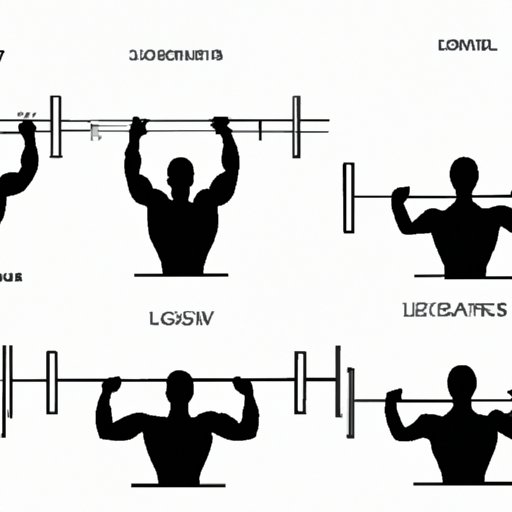Introduction
Are you tired of feeling self-conscious about your small arms? Do you want to build bigger, stronger biceps and triceps? If so, you’re in the right place. In this article, we’ll explore a comprehensive approach to getting bigger arms, including exercise, diet, and recovery. With these tips and strategies, you can transform your arms and gain confidence in your physique.
Incorporating Compound Movements
Compound exercises are multi-joint movements that engage multiple muscle groups at once. These exercises are great for building overall strength and size, including in the arms. Examples of effective compound movements for targeting the arms include pull-ups, chin-ups, and rows.
To maximize your results, it’s important to use proper form and intensity. Use a weight that challenges you without compromising your form, and gradually increase the weight or intensity over time. Aim for 3-4 sets of 8-12 reps for each exercise.
Progressive Overload
Progressive overload is the gradual increase in stress placed on the muscles over time. This is essential for promoting muscle growth and strength gains. To incorporate progressive overload into your arm training, you can gradually increase the weight you’re using, increase the number of reps or sets, or decrease your rest time between sets.
Tracking your progress is an important part of this process. Keep a log of your workouts and make adjustments as needed to continue challenging your muscles.
Isolation Exercises
Isolation exercises target specific muscle groups, such as the biceps and triceps. These exercises can be very effective for building size and definition in the arms. Examples of effective isolation exercises for the biceps include bicep curls and hammer curls. For the triceps, exercises like tricep pushdowns and skull crushers can be very effective.
When performing isolation exercises, use proper form and technique, and focus on feeling the muscle working. Avoid using momentum or swinging to lift the weight, as this will limit the effectiveness of the exercise.
Proper Form
Proper form is essential for effective muscle recruitment and growth. When you use proper form, you place the stress on the muscle you’re trying to target, rather than on other muscles or joints. This can help you maximize your results and avoid injury.
To maintain proper form, focus on using a slow, controlled movement. Avoid using momentum or swinging your body to lift the weight. Use a weight that challenges you without compromising your form.
Nutrition
Nutrition plays a crucial role in muscle growth and recovery. To maximize your arm gains, it’s important to consume adequate amounts of protein and calories. Aim for around 1 gram of protein per pound of body weight, and consume enough calories to support muscle growth.
Healthy, high-protein foods to include in your diet include chicken, fish, eggs, nuts, and beans. Avoid processed foods and sugary drinks, which can lead to weight gain and poor nutrition.
Recovery
Recovery is an essential part of the muscle growth process. When you train, you create micro-tears in the muscle fibers. These tears need time to heal and regenerate, which is why rest and recovery are so important.
Stretching, foam rolling, and taking rest days are all effective strategies for promoting recovery. Listen to your body and take time off when you need it.
Consistency
Consistency is key when it comes to seeing results in your arm training. Aim to train your arms at least twice a week, and stay patient and persistent in your efforts. Avoid getting discouraged by setbacks or plateaus – these are all part of the process.
Conclusion
Building bigger arms takes a comprehensive approach that includes exercise, nutrition, and recovery. By incorporating compound exercises, progressive overload, isolation exercises, proper form, good nutrition, and recovery strategies into your arm training, you can achieve the size and definition you’re looking for. Remember to stay consistent and patient in your efforts, and don’t be afraid to make adjustments along the way.
